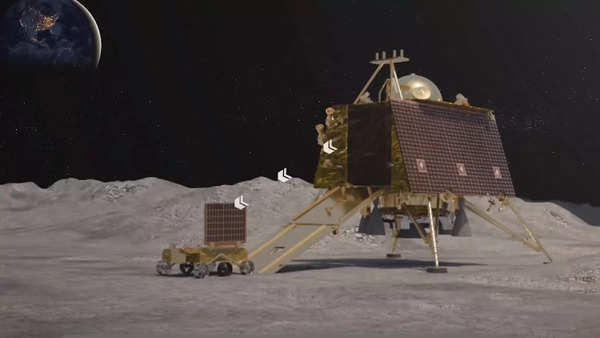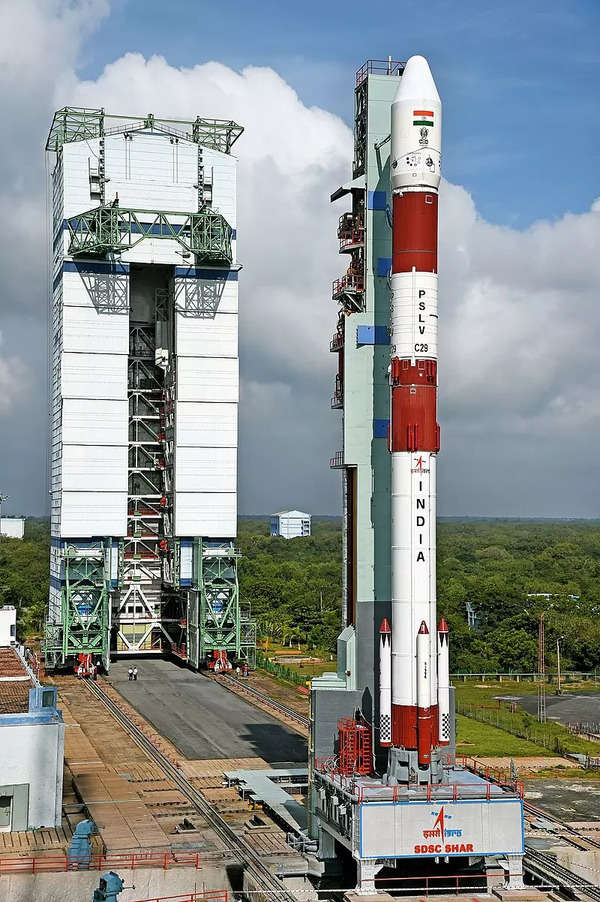NEW DELHI: For the first time in the history of
Isro
, India will launch two rockets to complete a single mission — the country’s fourth
moon mission
Chandrayaan-4 that will bring
moon rocks
and soil (regolith) back to Earth.
Two separate rockets — heavy-lifter LVM-3 and Isro’s workhorse
PSLV
— will carry different payloads for the same moon mission and will be launched on different days.
If successful, Chandrayaan-4, which is slated to be launched not before 2028, will make India the fourth nation with capability to bring back samples from the lunar surface. “The aim of the mission is to collect samples from the
lunar surface
and return the samples safely to Earth for scientific studies,” according to a recent presentation by Isro chairman S Somanath at National Space Science Symposium.
Chandrayaan rover
Unlike previous Moon missions, which involved 2-3 modules, the
Chandrayaan-4
mission will consist of a total of five spacecraft modules. These are the propulsion module, descender module, ascender module, transfer module and re-entry module, the presentation said.
While the four-tonne
payload lifter
LVM-3 will carry three modules —propulsion, descender and ascender modules, PSLV will launch the transfer and re-entry modules. The two rockets will be launched at different interval of time — one set of modules is likely to take the longer Earth-orbit manoeuvre route and use moon’s gravity to travel to the lunar orbit in around 40 days to lessen fuel expense, the other set of modules is likely to travel straight to the lunar orbit like Russia’s Luna-25 did by burning fuel. However, the exact sequence of these launches and finer details have not been disclosed by Isro.
The propulsion module will guide Chandrayaan-4 to the lunar orbit after performing Earth-bound orbit manoeuvers like Chandrayaan-3 module did. It will later get separated in the lunar orbit. The descender module will make the lunar landing, similar to Vikram lander of Chandrayaan-3. The ascender module, introduced for the first time in India’s noon mission, will collect and store
rock and regolith samples
from the lunar surface and will lift off from the moon and reach the lunar orbit where it will dock with the transfer orbit, The transfer module will be responsible for grabbing the ascender module, collecting lunar samples from it and then carrying the samples back to Earth’s orbit; and the re-entry module will safely land with the moon samples on Earth.
Chandrayaan-4 will carry five payloads:
1. Propulsion Module (PM) — guide spacecraft to lunar orbit
2. Descender Module (DM) — make lunar landing
3. Ascender Module (AM) — will collect lunar samples and lift off from Moon to lunar orbit
4. Transfer module (TM) — will dock with ascender, get samples and return to Earth’s orbit
5. Re-entry module (RM) — land on Earth with lunar samples
Two launch vehicles involved:
1. Isro’s workhorse PSLV rocket
2 Heavy-lifter LVM rocket
Launch date: Around 2028
Mission objectives:
1. To perform safe and softlanding on lunar surface
2. To demonstrate lunar sample collection and containersiation
3. Demonstrate ascend from Moon’s surface
4.Demonstrate docking and undocking in lunar orbit
5. Demonstrate transfer of samples from one module to other
6. To demonstrate return and re-entry to Earth for sample delivery



